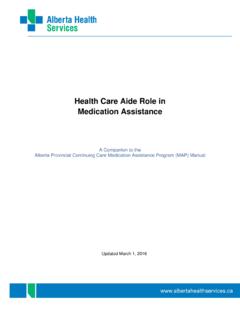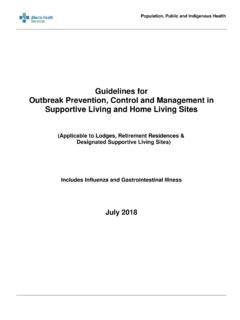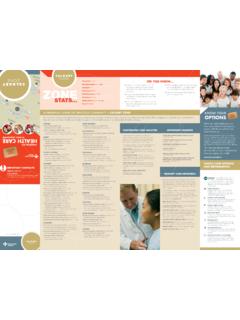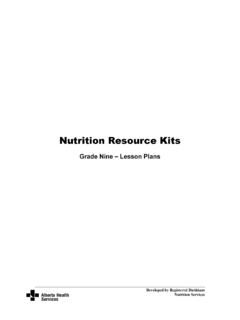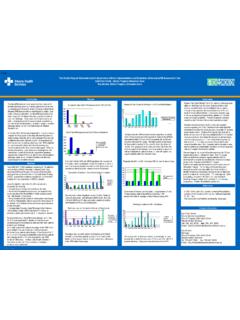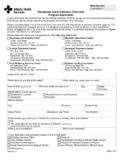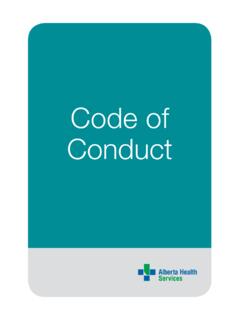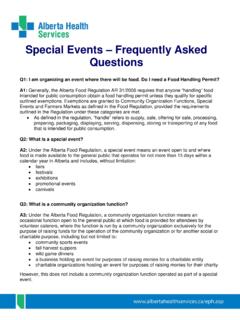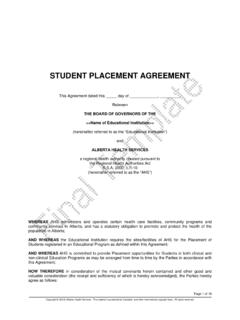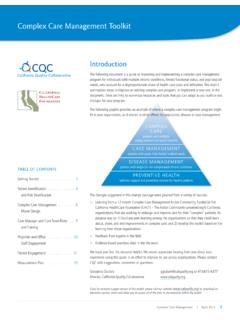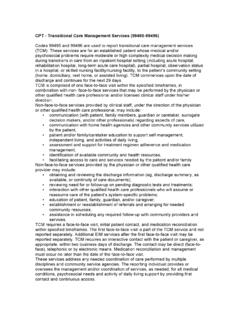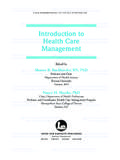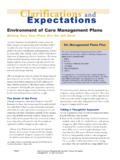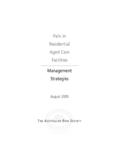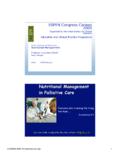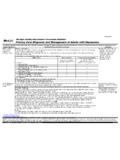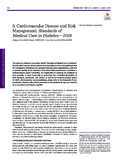Transcription of Continuing Care Quality Management Framework
1 For more information please email Continuing care Quality Management Framework Final June, 2014 Page | 2. Table of Contents Executive Summary 4. Introduction 4. Figure 1: AHS' Publically Funded Continuing care System 5. The Wellness Paradigm 6. Background: Building the Continuing care Quality Management Framework 6. Principles underpinning the Continuing care Quality Management Framework 7. Vision 8. Quality Management Definition 8. Figure 2: AHS Quality Management Framework 10. Figure 3: Goals and Outcomes of Continuing care Quality Management 11. Figure 4: Drivers of the vision 12. Enablers of Quality Management 13. Continuing care Quality Management Governance Structure 13.
2 Figure 5: HQCA Integrated Health Information Management Model 14. Measurement and Reporting 14. Quality Management Cycle 15. Figure 6: Continuing care Quality Management / Assurance Cycle 16. Figure 7: Risk Management of the Continuing care System 17. Capacity and Capability Development 18. Figure 8: AHS Continuing care Quality Management Maturity Matrix 18. Acknowledgements 19. Appendices 23. Appendix 1: Quality Enablers for Continuing care Quality Management Appendix 2: Continuing care Quality Committee Governance Structure Appendix 3: Continuing care Quality Committee Terms of Reference Appendix 4: Continuing care Reporting Framework Copyright (2014) Alberta Health Services.
3 This material is protected by Canadian and other international copyright laws. All rights reserved. This material may not be copied, published, distributed or reproduced in any way in whole or in part without the express written permission of Alberta Health Services (Community, Seniors, Addiction & Mental Health and Quality & Healthcare Improvement Divisions). Final June, 2014 Page | 3. Executive Summary The AHS Continuing care Quality Management Framework outlines the structure, functions, responsibilities and accountabilities for monitoring, improvement and operational delivery of quality1 safe care and service2 that may influence or impact the safety of individuals3 receiving Continuing care services.
4 This Framework is not a standalone document and is supported by the: AHS Quality and Health care Improvement Quality Management Framework 2014 (draft); Health Quality Council Matrix 2004; AHS 2013-2016 Patient Safety Strategic Plan; AHS Enterprise Risk Management Framework 2010; AHS Ethics Framework , 2014; AHS Progressing the Continuing care Strategy: the Right care in the Right Place 2010; Government of Alberta Health System Outcome and Measurement Framework 2013; Alberta Health Continuing care Healthcare Standards 2008(amended 2013): Alberta Health Continuing care Accommodation Standards 2010; and, Standards for Infection Prevention and Control Accountability and Reporting 2011.
5 As outlined in this Provincial AHS Continuing care Quality Management Framework , the Quality vision, Quality enablers, Quality outcome indicators and risk Management mechanisms have been developed through wide stakeholder engagement and informed evidence. AHS Community Seniors Addiction and Mental Health (CSAMH), and Quality and Healthcare Improvement (QHI), in collaboration with clients, residents and their families, Zone Operations, Contracted Providers, and Alberta Health (AH) are leading the ongoing development and implementation of this Framework through the establishment of the Continuing care Quality Committee (CCQ). The CCQ will provide the governance structure and vital link to ensure provincial consistency; to consolidate all risk and Quality activities into a single registry; to enhance the ability to identify Quality of care issues earlier; and to reduce the time and administrative burden for operators by better coordinating Quality activities.
6 Introduction The Alberta Health Services Continuing care The Continuing care system system provides ongoing care services and in Alberta generally does not accommodation that support Albertans to remain fail people but Continuing independent and receive the appropriate amount care processes are very and type of service to meet their health care confusing from the client's needs. Continuing care clients are defined by perspective - it is like their need for care and not by age, diagnosis or learning a foreign language.. the length of time they may require service. ~Client/Family Stakeholder Feedback Continuing care healthcare services are intended February 26, 2014.
7 To supplement and complement, not replace, care provided by primary healthcare, individuals, families, and communities. 1. Quality as defined by the Health Quality Council of Alberta Quality Matrix, including the six dimensions of Quality 2. Safe care and service relates to individual(s) receiving publicly-funded Continuing care healthcare 3. Individuals include patients, residents, clients and the individual's family or legal representative Final June, 2014 Page | 4. These services are provided across living arrangements including those that are community based and facility based; and, these services and supports are provided through a combination of internal AHS, external contracted providers, and carers / informal supports.
8 The following diagram (Figure 1) provides an overview of AHS' publically funded Continuing care System. The purple sections represent the service supports and location where they are provided. The blue sections represent accountabilities and supports to meet those accountabilities. AH, AHS, and community partners in delivery of Continuing care services have been working to ensure that Albertans are receiving the right care , in the right place, at the right time no matter where they live in the province. As outlined in the AHS Progressing the Continuing care Strategy: the Right care in the Right Place 2010, AHS has been deliberate through this Seniors Health Strategy to provide a consistent approach to Continuing care across Alberta.
9 With these changes well underway, the focus must now be on developing a Continuing care Quality Management Framework supported by a leadership, and a structure to support continuous Quality improvement. Figure 1: AHS' Publically Funded Continuing care System Final June, 2014 Page | 5. The Wellness Paradigm Continuing care Services are grounded in a wellness paradigm focused on abilities, strengths, and maintaining independence across a person's lifespan, and based on the following assumptions: Aging is a normal part of the lifespan;. health is defined by individuals themselves in terms of their own unique strengths and challenges, value systems, Quality of life, and integral interdependent relationships.
10 Individuals are responsible for their own lives and make choices in relation to their own health and wellbeing;. individuals with chronic illness, frailty related to aging, or disability can, and do, lead healthy and productive lives;. restorative care can influence the wellness and independence of even the most health compromised;. those with chronic health conditions usually spend more time in caring and supporting themselves than do the health professionals involved in their formal healthcare services;. individuals and their families are capable of learning new skills and acquiring new competencies. family and natural support networks are full partners in care and bring their own strengths and resources.
